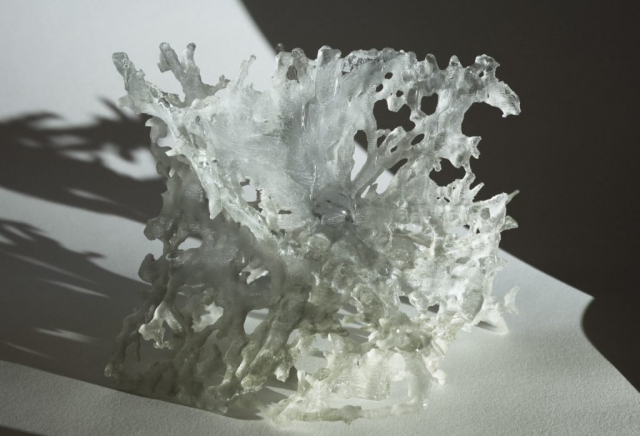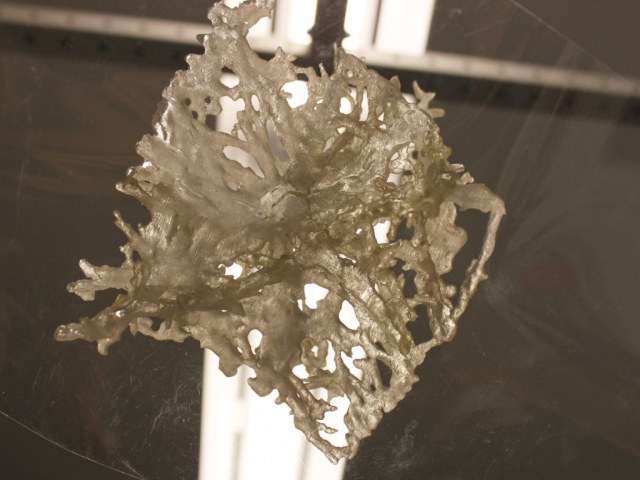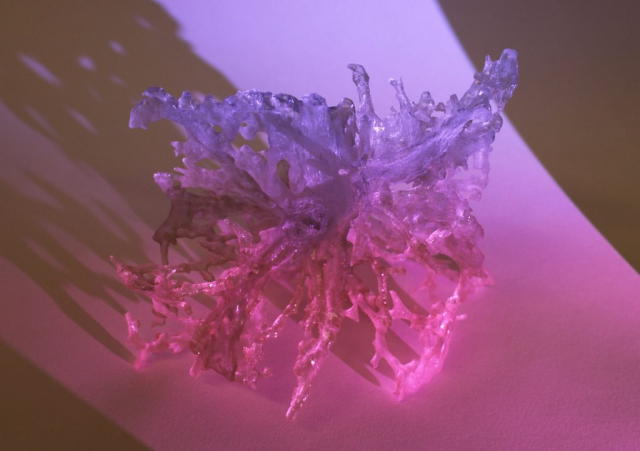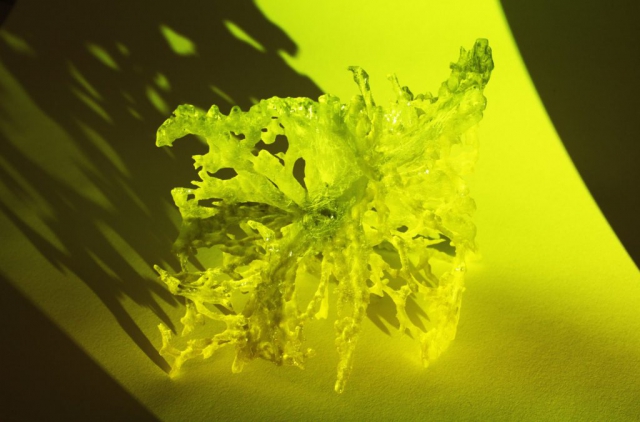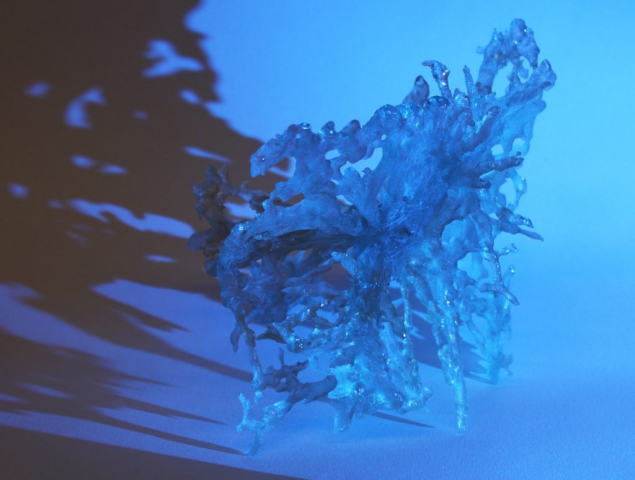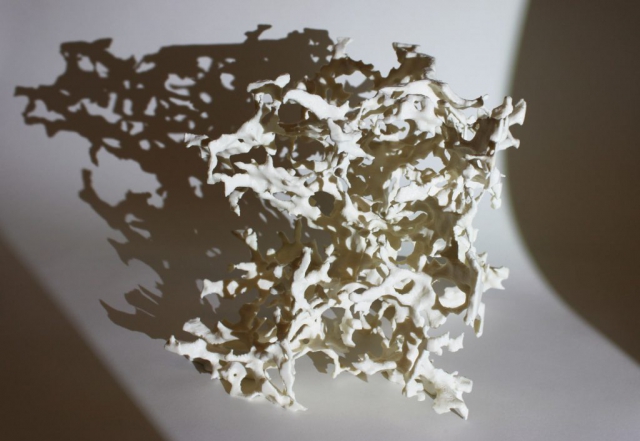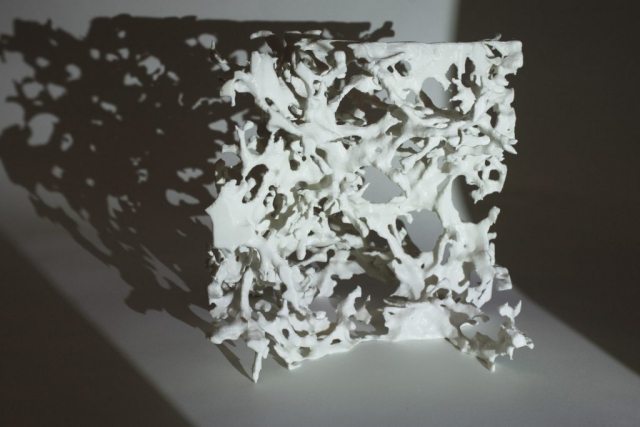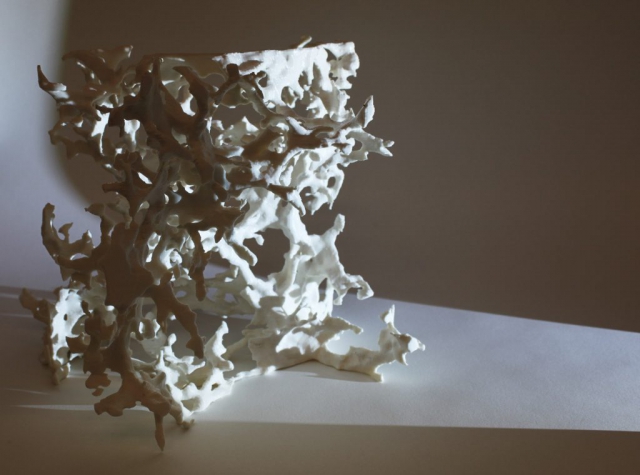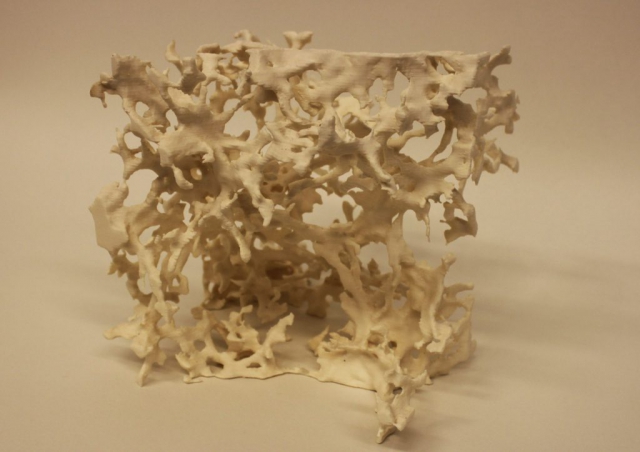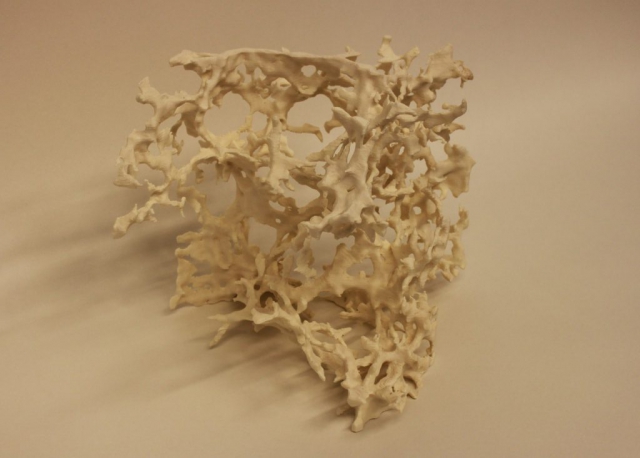Initially, our 3D prints were intended as a pathfinder toward our textile installations, and to gain a rudimentary understanding of the 3D structure of dark matter. However, the prints turned out to be a worthwhile investigation in their own right (see the process page for details on how we convert simulation data into printable surfaces). The 3D surfaces shown here are publicly available as print-ready .stl files (cosmological_volume.stl, infall_region.stl). If you use them in a publication or exhibition, please credit The Fabric of the Universe.
Our first 3D model represents the infall region around a massive dark matter halo, about 230 million light years on a side. The print was created on an Objet 30 Pro machine at the Advanced Output Center at SAIC, using transparent plastic, and measures about 15cm on a side. Multiple walls of dark matter are apparent, highlighting an important advantage of the 3D printing technique: if such walls intersects a 2D image, they show up as filamentary structures (or not at all), misleading the viewer.
The second print shows a larger volume, about 600 million light years on a side. It was also created at the Advanced Output Center, but on a Dimension SST 1200es printer using opaque beige plastic. The print measures about 25cm and on a side.
